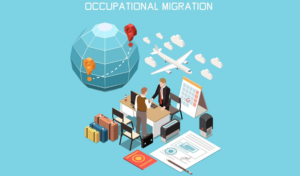The Impact of COVID-19 on the US Healthcare System Examining the Pandemic’s Influence on Hospitals and Clinics
The world as we know it has been significantly impacted by the COVID-19 epidemic, and the US healthcare system is no exception. The epidemic has brought to light the value of healthcare and how essential it is to maintaining the health and safety of our communities. The epidemic has put the US healthcare system to the test, from a lack of personal protective equipment (PPE) to the demand for more critical care services.
Hospitals and clinics are one setting where the epidemic has had a particularly negative impact. With frequently constrained staffing and resources, these institutions have had to quickly adjust to the pandemic’s constantly shifting environment. In order to comprehend how hospitals and clinics have adapted to the problems provided by COVID-19 and how they can continue to adapt in the future, it is imperative to study the pandemic’s impact on those facilities.
In this essay, we’ll look at how COVID-19 has impacted the US healthcare system in general and hospitals and clinics in particular. We’ll look at the adjustments healthcare professionals have had to make in order to give patients safe and effective care, the financial effects of the epidemic on healthcare providers, and the rise of telemedicine services in reaction to the pandemic. We intend to get insight into how the epidemic has impacted the US healthcare system by examining these issues and to make suggestions for how hospitals and clinics can continue to innovate and adapt in the face of new obstacles. So grab your beverage of choice, settle in, and let’s discuss how the epidemic has affected the US healthcare system.
The Quick Reaction to COVID-19
Hospitals and clinics had to act rapidly to protect their patients and employees when the COVID-19 epidemic first surfaced. This required instituting new policies and practises, such as screening patients for symptoms, restricting visitors, and equipping healthcare staff with personal protective equipment (PPE).
Healthcare professionals had a variety of difficulties during the early phases of the epidemic in addition to these physical changes. These included a lack of PPE, ignorance of the virus and its transmission, and the emotional strain of caring for seriously ill patients. Despite these difficulties, healthcare professionals all around the nation rose to the occasion and put in endless effort to give their patients the best care possible. The quick response to COVID-19 demonstrated the commitment and resiliency of the medical profession and laid the groundwork for future creativity and adaptation as the epidemic develops.
Hospital Operations Are Affected
Hospital operations were significantly impacted by COVID-19, notably in terms of patient care. Hospitals have to choose carefully how to allocate resources and people in order to handle the inflow of COVID-19 patients. This sometimes involved cutting back on or delaying elective procedures and surgeries to make room for critical care services.
Additionally, the capacity and staffing of hospitals were under pressure due to the rise in demand for critical care services. In order to promptly respond to the pandemic’s changing needs, hospitals had to set up specialised COVID-19 units and use of telemedicine had to rise.
The epidemic has made managing hospital operations difficult, necessitating careful balance of patient demands, resource allocation, and staff safety. Healthcare professionals have kept up their high-quality care for individuals in need despite these difficulties.
Financial Effects on Clinics and Hospitals
Hospitals and clinics have suffered a great deal of financial loss as a result of COVID-19, as well as increasing costs. There have been considerable financial losses as a result of the cancellation of elective operations and surgeries, which are frequently a significant source of income for healthcare providers.
Hospitals and clinics are now paying more because to the increased demand for personal protective equipment (PPE), as well as other pandemic-related costs. Their financial resources have been strained as a result, especially those of smaller or less well-funded institutions.
The CARES Act and Provider Relief Fund are just two of the aid programmes the government has implemented to cope with these issues. Although these programmes have given healthcare providers the much-needed financial support they required, persistent worries remain over the healthcare system’s long-term financial viability. As the pandemic progresses, the financial toll that COVID-19 will undoubtedly continue to have on hospitals and clinics.
Telemedicine and Online Care
In order to limit in-person contact and slow the transmission of the virus, healthcare practitioners have significantly increased their usage of telehealth and virtual care services as a result of the COVID-19 pandemic. Patients can now obtain care from the security and comfort of their own homes thanks to telehealth services, which also give healthcare professionals a way to continue providing care and managing chronic diseases remotely.
While telehealth services have many advantages, such as greater accessibility and convenience, they also have drawbacks, such as technical difficulties and worries about the standard of treatment provided remotely.
Despite these drawbacks, the pandemic’s increase in telehealth and virtual care services has important long-term consequences for patient care and healthcare delivery. As infrastructure and technology continue to advance, telehealth services are anticipated to continue to play a significant role in the delivery of healthcare. In underserved or rural areas, using telehealth services may also aid in addressing concerns with healthcare equity and access.
Employment in the Healthcare Sector
The COVID-19 pandemic has had a major impact on the healthcare workforce, with front-line healthcare workers experiencing a variety of difficulties and demands. Healthcare workers’ mental health and wellbeing have been a big concern because many of them deal with high levels of stress, burnout, and anxiety.
Additionally, the pandemic has resulted in a lack of healthcare professionals, particularly in regions with high infection rates or scarce resources. As a result, healthcare providers have had to come up with fresh approaches to these shortages, like redeploying staff and hiring new healthcare workers.
The pandemic’s effects on the healthcare workforce are still a concern, therefore it will be crucial for healthcare providers to keep putting employee welfare first while also coming up with creative ways to deal with labour shortages and guarantee high-quality patient care.
Opportunities and Implications for the Future
The COVID-19 pandemic has posed a number of difficulties for the healthcare sector, but it has also opened up possibilities for innovation and advancement in patient care and healthcare delivery. In order to protect the safety and wellbeing of its patients and employees, healthcare providers have had to quickly adapt to new issues and create new solutions.
The future of healthcare will be significantly impacted by the lessons learned from the pandemic, including the necessity of prioritising preparedness and resilience in the face of future crises, the significance of investing in healthcare infrastructure and technology, and the potential for new models of care delivery, such as telehealth and virtual care services.
As policymakers and stakeholders attempt to address the pandemic’s long-term effects on the healthcare sector and make sure that the lessons learned from this crisis are incorporated into future policies and regulations, the pandemic may also have a significant impact on healthcare policy and regulations.
Conclusion
Finally, it should be noted that the COVID-19 epidemic has had a major and widespread effect on the US healthcare system, notably on hospitals and clinics. In order to protect the safety and wellbeing of their patients and employees, healthcare providers must quickly adapt to new difficulties and come up with creative solutions. This need has been made clear by the epidemic.
The rapid response to COVID-19, the effect on hospital operations, the financial ramifications for hospitals and clinics, the emergence of telehealth and virtual care services, and the effect on the healthcare workforce have all been covered in this article. We have also talked about the pandemic’s lessons learned and their implications for patient care and healthcare delivery in the future.
Healthcare professionals must continue to assess the situation and adjust as the epidemic develops in order to guarantee that they are delivering the best care they can in a secure and efficient manner. It will be crucial for the healthcare sector to seize these chances and keep pushing for advancement and innovation in the years to come. The epidemic has also given opportunities for innovation and improvement in healthcare delivery.
Read More You May Like:














Post Comment